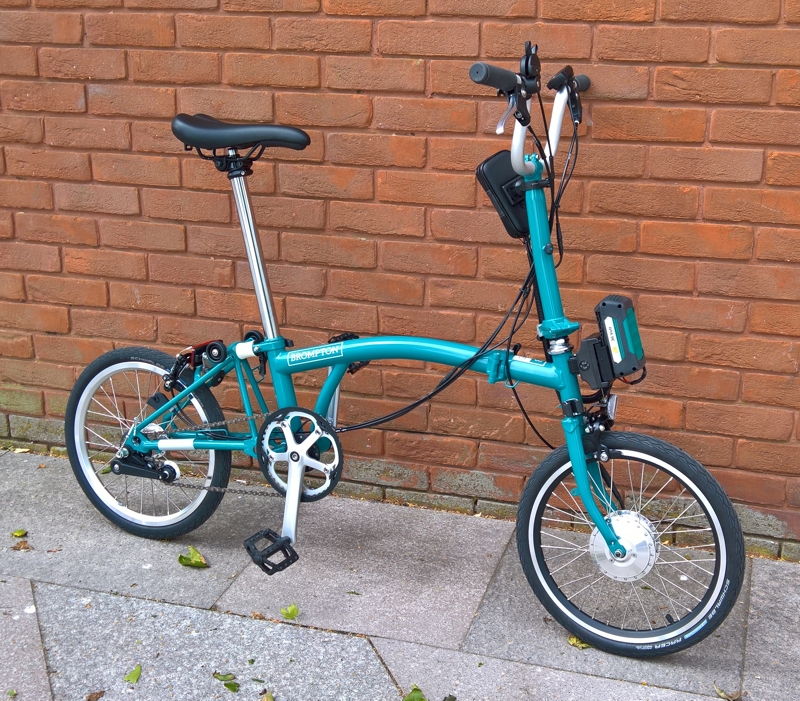This advice is for making an electric bike for general transport, like commuting, shopping, leisure rides, etc. I was going to post it in the thread about Aldi bikes, but I thought it might be better on its own.
You can convert just about any bike if you have the resources and the determination. It's surprising how many people come on the forum with all sorts of unusual bikes that they want to convert, mainly because that's the bike they have. Often, they bought an expensive bike then realised that they'd be better off with an electric one. The unusual features often bring some advantage to the bike as it is, but don't really do anything as an electric bike apart from make the conversion more tricky. My first question is always why convert that bike? Used bikes can be obtained relatively cheaply, and in many cases the cost of a donor need not be high in relation to the cost of the conversion.
There's absolutely no point in buying a new bike to convert. You'll wipe out any guarantee, you'll probably be scared to drill any holes or start filing the frame and you'll be more concerned about being able to unconvert it than doing a decent conversion. You can get decent used ones for 1/3 of the price of new, so £150 should get you something pretty decent.
You don't need anything fancy because you have a motor to help you, which will more than compensate for any shortcomings in the rest of the bike. It's an absolute fallacy that you need an expensive bike for durability and reliability. The cheap bikes are very durable and often very suitable for conversion, except those without triangle frames. It's very cheap to upgrade any components that you're not happy with, such as the brakes. You can snag a pair of good hydraulic brakes for about £40 from ebay, which is nothing compared with the cost of conversion and is the best bang-for-buck upgrade you can do to any bike - electric or not.
Things to look out for in a Donor bike:
You can convert just about any bike if you have the resources and the determination. It's surprising how many people come on the forum with all sorts of unusual bikes that they want to convert, mainly because that's the bike they have. Often, they bought an expensive bike then realised that they'd be better off with an electric one. The unusual features often bring some advantage to the bike as it is, but don't really do anything as an electric bike apart from make the conversion more tricky. My first question is always why convert that bike? Used bikes can be obtained relatively cheaply, and in many cases the cost of a donor need not be high in relation to the cost of the conversion.
There's absolutely no point in buying a new bike to convert. You'll wipe out any guarantee, you'll probably be scared to drill any holes or start filing the frame and you'll be more concerned about being able to unconvert it than doing a decent conversion. You can get decent used ones for 1/3 of the price of new, so £150 should get you something pretty decent.
You don't need anything fancy because you have a motor to help you, which will more than compensate for any shortcomings in the rest of the bike. It's an absolute fallacy that you need an expensive bike for durability and reliability. The cheap bikes are very durable and often very suitable for conversion, except those without triangle frames. It's very cheap to upgrade any components that you're not happy with, such as the brakes. You can snag a pair of good hydraulic brakes for about £40 from ebay, which is nothing compared with the cost of conversion and is the best bang-for-buck upgrade you can do to any bike - electric or not.
Things to look out for in a Donor bike:
- For hub-motors, 26" wheels might be best because you get higher torque than the 27.5, 700C and 29" wheels. Onviously, if you're not heavy, you can trade torque for speed with bigger wheels.
- If you're a bloke, a bike with a normal crossbar and triangular frame gives the most battery installation options.
- Choose a bike with disc brakes, which should be upgraded to hydraulics for the better braking required on an electric bike.
- If you want to fit a front motor, choose a bike with steel forks - not the thin ones that you get on the old Raleigh bikes, but some wth a bit of meat in the drop-outs.
- Very old bikes, like BSAs, Raleighs, etc have unusual sized wheels, so you can't buy a ready-made kit. You have to build your own wheel. Their brakes are not up to it anyway, so best avoided.
- For a crank motor conversion, nearly all your focus should be on the bottom bracket. Modern ones bring all sorts of problems, and so does this modern trend for tiny chainwheels, 10 or 11 speed gears and fat tyres, so stick to older convential bikes with normal tyres, gears and bottom brackets.
- You need a conventional tube-type bottom bracket, ideally with the standard BSA/Shimano thread and 68 or 73mm wide. There are versions of the motors with longer shafts for fat bikes, but you're likely to run into other problems.
- Modern MTB bikes with small chainwheels sometimes don't have the clearance for a standard crank motor's reduction gear housing.





